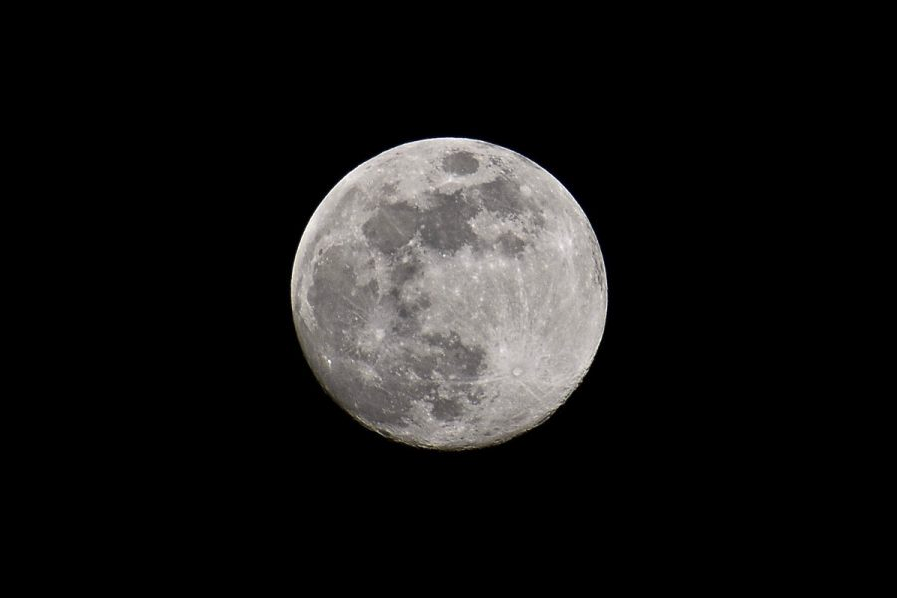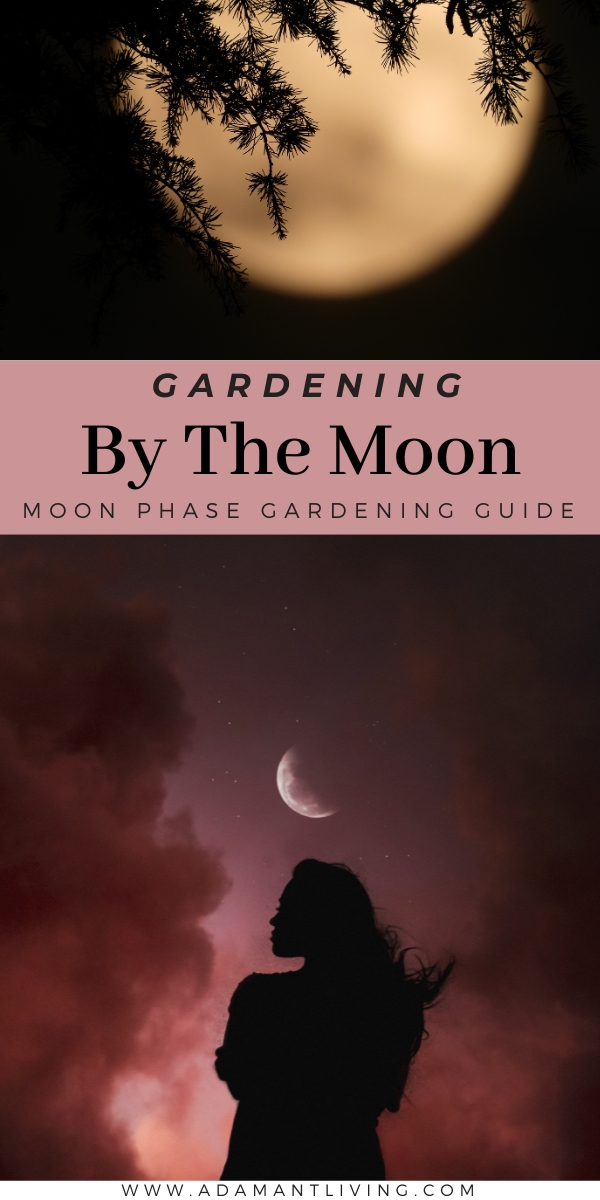Determine the best planting days, grow a healthy vegetable garden, and have a bountiful harvest by using the zodiac and the phases of the moon! Learn how in this complete guide!

(This post was contributed by Melissa Keyser.)
Using the Moon Phases and the Zodiac to Guide Your Gardening
Gardening by the moon or the zodiac elements is a holistic gardening process that allows our gardening practices to root us to our ancestral path. Even in our modern times, we have the opportunity to follow traditions that have been practiced for centuries.
Evidence of its practice dates back to the early civilizations of the Euphrates River valley, and it can be found in the folklore of ancient societies all over the world. Roman historian Pliny the Elder wrote about planting by the moon in his History of Nature.
Yet despite such a long history, using the moon to determine the best time to plant and other gardening practices were lost due to modern times and industrialization. But it’s time for a revival!
There are many different ways, as I explore in this post, that you can use the guidance of the celestial bodies to help your garden. At first glance, gardening by the moon or the zodiac can seem like it takes lots of specialized knowledge or it’s a practice shrouded in mystery. However, it just takes awareness of the larger world around you and paying attention to the natural cycles, which is something that anyone can cultivate!

How the Moon Influences the Garden
Just like how the moon is responsible for tides, the moon has a gravitational pull on the waters in soils, plants, and seeds. The phase of the moon also influences how much light is in the garden. Moon gardening simply involves knowing what phase the moon is in, understanding how that affects the gravity of water, and using that info to know what kind of garden tasks to undertake.
How to Know what Moon Phase We are In
Can you imagine how powerful it would be to intrinsically know what phase of the moon we were in, like how our ancestors did by simply gazing at the night sky? Most of us know when the moon is full, as she stands bright in the sky, but what about the other, more subtle phases?
This is something I’m working on cultivating in my own life. Yet with city lights, buildings blocking the moon, or just plain lack of time to stand outside at night, I often don’t know. In those times, we have the reminder of modern technology.
There are detailed lunar planting calendars available online and in print. These provide phase info and zodiac signs, as well as detailed garden tasks.
But, a basic calendar will do just as well if you’re just getting started. Most paper wall calendars list the full, new, and quarter moons.
If you use Google calendar, you can add the phases to your existing account by go to Add Calendar, and then search for the “Phases of the Moon Calendar” extension.
I use the free MOON app on my iPhone for a super quick way to know what moon phase we are in. There are also many others moon calendars online.

Using the Moon Phases to Determine Best Planting Days and Other Garden Tasks
The New Moon
Ancient Greeks believed the new moon was a time of fertility and rebirth because the moon and sun were joined together at the same part of the sky. During the new moon, gravity from the moon is pulling water up, which aids in germination. This phase is the best time to plant above ground crops plants that produce seeds outside of the fruit, such as lettuce, spinach, cabbage and grains.
The Waxing Moon (2nd Quarter)
Increasing light from the growing moon is good for leaf growth. This is the best time to plant above ground crops that produce seeds inside of fruits, like beans, melons, peas, peppers, squash, and tomatoes.
The Full Moon
During this phase, energy is drawn down, and after the moon has peaked, the light starts to decrease, good for root growth. Plant root crops such as beets, carrots, onions, and potatoes. This is also a good phase to transplant any type of plant.
Waning Moon (4th quarter)
This is the time of rest and maintenance. Weed, prune, fertilize, and graft during this moon phase. The last few nights of this quarter, when the sky appears moonless, is a fallow period.
This signifies the death of the old before the start of the new. It’s best to do no garden work at this time if possible.
Using the Earth’s Daily Cycles to Determine Best Planting Days and Other Garden Tasks
Some people recognize that the earth has cycles of inhalation and exhalation.
In the morning, Earth exhales, which allows sap and water to rise. This is the best time to harvest plants whose parts we eat are above ground.
Lettuce, for example, is full and plump. This is also the best time to apply foliar feeds and sprays.
In the evening, Earth inhales, which draws sap down into the roots and soil. This is the best time to sow seeds, harvest root crops, dig soil, ready for planting, and spreading compost.
Using the Moon Paths to Determine Garden Activities
Some gardeners don’t follow the individual moon phases, but instead, take note of the moon’s path and if it’s considered ascending or descending. As the moon orbits around the earth, it moves between the northern and southern elliptical hemispheres. This is also known as the ascending and descending moons.
During the ascending moon, the moon moves above the ellipse and sits high in the sky. On ascending moons, the sap of the plant is drawn up. This is the best time to harvest non-root crops, sow seeds for above ground crops, look out for slugs and other pests, and take cuttings and graft plants.
When the moon is descending, the moon is moving below the ellipse and sits low in the sky. On descending moons, the sap in plants is drawn down. This is a good time to transplant or sow seeds of root crops, weed, feed the soil, prune and mow.
Using Elemental Days and the Zodiac Calendar to Determine Best Planting Days and Other Garden Tasks
This gardening practice is rooted in astronomy (NOT astrology) and is one of the guiding principles in biodynamic gardening. This practice looks not at the moon, but to the other celestial beings to determine best planting days.
How the Biodynamic Zodiac Planting Calendar Works
During its orbit around the Earth, the moon passes in front of all the zodiac constellations. This alignment is used to guide the best planting days, harvesting, etc. As we know from our horoscopes, each constellation is affiliated with an element: earth, water, air or fire. My sign of Pisces, for example, is a water sign.
The Elements & the Zodiac Signs:
- Roots are associated with Earth Signs: Taurus, Virgo, and Capricorn
- Leaves are associated with Water Signs: Cancer, Scorpio, and Pisces
- Flowers are associated with Air Signs: Gemini, Libra, and Aquarius
- Fruits and Seeds are associated with Fire Signs: Aries, Leo, and Sagittarius
For example, eggplants (a fruit), would be planted on a Fire sign, such as Libra. Carrots (a root) would be planted on an Earth sign, such as Taurus.
So, does it matter?
That’s always the question, isn’t it, when exploring things in the unseen. It is touted that when plants are sown at the right timing of phase and sign, plants do better. They show increased growth, better resiliency against pests, larger harvests, and take longer to go to seed.
But, there is not much scientific evidence that astrological gardening or planting by the moon phase has any beneficial effects. I have honestly not taken enough detailed records to notice if it has made a difference in my garden.
Of course, there are many other factors that affect plant growth. Like seasons and weather and chickens who scratch up your beds!
But, in my opinion, a practice that has such deep roots must have some value. At the very least, it is an opportunity to slow down, have an intention for what you are doing, and observe the natural cycles around us!

Leave a Reply